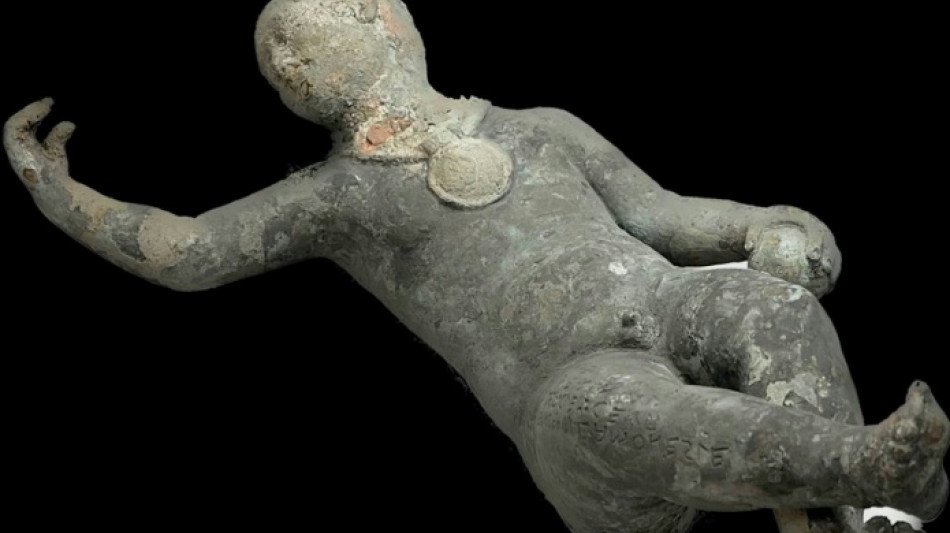
Italy unearths exceptional haul of ancient bronzes

Italian archaeologists announced on Tuesday the extraordinary discovery of more than 20 bronze statues created over 2,000 years ago, almost perfectly preserved in the mud of hot springs in Tuscany.
The statues depict deities venerated at a sanctuary in San Casciano dei Bagni, established first by the Etruscans and then expanded under the Romans, according to Italy's culture ministry.
Votive offerings and around 5,000 gold, silver and bronze coins were also found during three years of excavations at the site, which has drawn visitors to its natural thermal waters for more than two millennia.
Jacopo Tabolli, the Etruscan specialist who led the project, called it an "unparallelled" discovery that promised to shed new light on the period when the bronzes were created, from around the 2nd century BC to the first century AD.
It was during this time that the ancient civilisation of the Etruscans, conquered by Rome, was gradually absorbed into the Roman Empire.
"The Tuscan site is the largest deposit of bronze statues from the Etruscan and Roman age ever discovered in ancient Italy and one of the most significant in the entire Mediterranean," Tabolli said.
"It is unparallelled, especially because until now the statues from that period have mainly been terracotta."
The hot spring water preserved the items to such an extent that inscriptions in Etruscan and Latin are still visible, including names of powerful Etruscan families.
The statues include depictions of the god Apollo and of Hygieia, venerated as the goddess of health.
Massimo Osanna, director general of Italy's state museums, said it was the most important Italian finds since the Riace Bronzes, and "certainly one of the most significant bronze finds ever made in the history of the ancient Mediterranean".
In 1972, two ancient Greek bronze statues of warriors dating back to the fifth century BC were recovered in a near-perfect state of conservation near Riace in southern Italy.
The bronzes discovered in the Tuscan hot springs will be the centrepieces of a new museum, to which an archaeological park will eventually be added.
C.Grillo--PV
